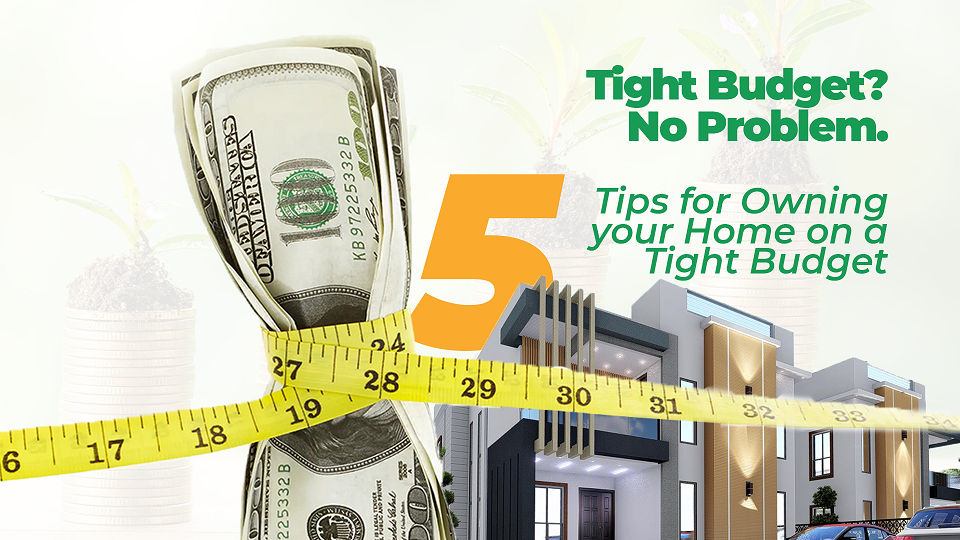OWNING YOUR HOME ON A TIGHT BUDGET
Are you dreaming of owning your own home, but do not know how to go about it, or are you worried about the cost? Do not let a tight budget be a setback!
Truly, owning a house can be an exhilarating and fulfilling experience, it can also be a consequential financial undertaking, but it does not have to break the bank. If you are looking to own your dream home on a tight budget, there are several strategies you can use to lower costs and still get the home you want. In this article, we will learn a range of cost-saving strategies, from choosing an affordable design to using prefabricated components that can help you build your home at a lower cost. By following these strategies, you can stretch your budget and still achieve your dream of building your own home.

1. PROJECT PLANNING
Effective project planning is key to building a house at a lower cost. By carefully planning each step of the construction process, you can ensure that your project stays on track and within budget. One way to plan your project is to create a detailed schedule that includes all of the tasks that need to be completed and the timeline for completing them. By setting clear goals and deadlines, you can stay focused and avoid unnecessary delays or setbacks. In addition to creating a schedule, it is also important to plan for contingencies and unexpected issues that may arise during the construction process.
By having a clear understanding of your budget, you can make informed decisions about how to allocate your resources and stay on track. In addition to creating a budget, you should also explore financing options to help fund your construction project. There is a range of options available, including traditional mortgages, construction loans, and owner financing. By comparing rates and terms, you can find the financing option that best meets your needs and budget.

2. FUNCTIONAL DESIGN
Functional design is a concept that focuses on creating spaces that are efficient and effective, with a clear purpose and function. By designing a house with a functional layout and incorporating features that meet the specific needs of the occupants, you can create a space that is both practical and cost-effective. One way to incorporate functional design into your home construction project is to carefully consider the layout of the space. For example, your design can be a cost-effective option for building a house because they are mass-produced and can be assembled more quickly than traditional construction methods.

3. PREFABRICATED COMPONENTS
Prefabricated components, also known as prefab, are factory-produced building parts that can be used to construct a home or other structure. Prefabricated components come in a range of options, including walls, floors, roofs, and complete building modules. They can be made of a variety of materials, including wood, steel, and concrete, and can be customized to meet your specific needs. One advantage of using prefabricated components is that they can be produced off-site, which can reduce construction time and minimize disruptions on the construction site. In addition, because they are mass-produced, they can often be purchased at a lower cost than traditional building materials.

4. LOCALLY-MADE MATERIALS
One way to lower the cost of building a house is to shop around for locally-made building materials. By going for locally made materials you will potentially save a significant amount of money on your construction project as these materials can be easily sourced. In addition, most locally made materials are not just cost-effective they are also more durable and efficient. This can be especially effective if you are working with a larger construction project and have more advantages.

5. RIGHT BUILDER
Your architect or builder will be key to advising you on the right size home for your budget as well as providing you with a cost to build. Their expert team will be able to understand all the steps necessary for permitting and any added cost associated with the process. Referrals from friends, family, and your realtor are the best sources to find the right builder.













